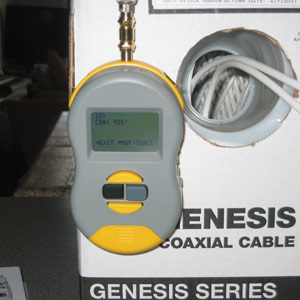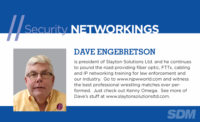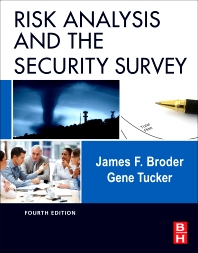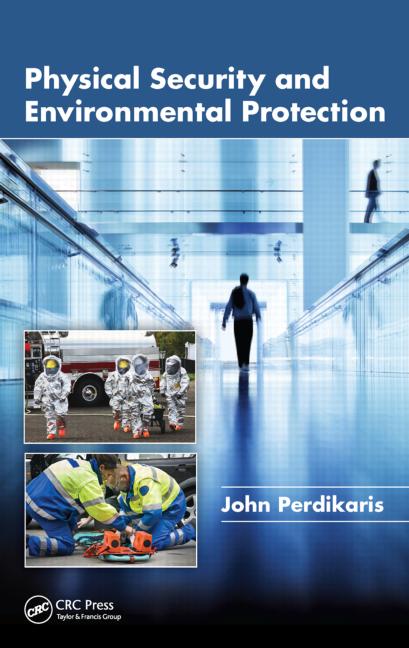
|
|
The magic of duct tape holds the “Real World Tester” onto the side of the coax cable box. PHOTO BY DAVE ENGEBRETSON |
Fishing on the lake at our southwestern Michigan vacation home takes on greater importance with each passing year. We never seem to have a problem catching the little ones, but the big bass we’ve seen caught by other boats continue to elude us. While I change rods, baits and boat position in a frenzy, my daughter is asking when we can head back to the dock and her Nintendo DS.
This year is going to be different, for sure. At Christmas I received an electronic depth finder that will indicate the exact depth below the boat. Now I can adjust my bait presentations to the exact depth/distance, and I will slay them in 2012. Success is assured, because fishing is all about putting your lure at the right depth, where the big ones are. The depth finder turns the unknown (the depth of the water) into a known distance to the bottom.
In my opinion the biggest single new technology to hit our industry is the ability to re-use existing coax, fiber, and UTP cables to achieve both connectivity and remote power delivery to the entire spectrum of IP-enabled physical security devices. It is imperative that security dealers who want to survive must learn to use these pre-installed cables, or they will be killed on price by their competitors who can provide the same system functionality at a substantially lower cost.
Let’s focus on coax for a moment. How many millions of feet of existing RG-59U, RG-6, and RG-11 are already pulled and terminated in your prospective (or existing) clients’ buildings? If an installation company can use those existing cables, suddenly the cost of a new or upgraded system is dramatically lowered, resulting in three things:
- more new customers or renewed existing accounts for your company;
- less chance for profit failure resulting from misestimation of the labor time required to pull and terminate new coax cables; and
- because the system can be installed more quickly than putting in all new cable, installation teams can put in more jobs, which brings more new customers.
There are a number of vendors supplying IP and PoE (Power over Ethernet) coax-based transceiver sets, and you can believe me when I say these devices do work because I’ve tested a bunch of them. These devices provide a known and testable ability to perform as advertised.
The unknown factor is the type, quality and length of the existing coax cable(s). By reading the stamped information on the side of the cable and examining the connector end it is easy to determine what type of coax you’re looking at. Pay attention to the center conductor, which is usually 20 or 22 gauge. Bigger is better, and if the conductor is solid bare copper, things are looking good. Solid steel or copper-clad steel coax cores are not optimal for use with the new generation of IP/coax transmitters. These core types will provide IP connectivity, but will function for shorter distances than will the bare copper variety.
It’s pretty easy to tell what kind of coax is already installed; the problem is to determine the precise foot-length of a specific cable, connector to connector. Along with the cable type information, the length measurement is critical because certain transceiver sets will only function at particular distances.
How do we measure the distance of an existing installed cable without trying to “walk” the whole cable and visually estimate the length? What’s needed is a Time Domain Reflectometer (TDR). By sending an electrical pulse into one end of the cable, which reflects back from the far connector and measures the time of the signal’s travel, the length of the tested cable is determined.
Enter the “Real World Certifier” testing system manufactured by Byte Bros. I’ve used this vendor’s testers for a number of years without any problems. The Real World Certifier is a combination coax and UTP tester set that provides a battery of common cabling/connector tests, along with graphic UTP link quality displays. The Real World Certifier provides a solid testing platform for electronic security technicians who need to quantitatively measure the capability of a specific cable to provide the performance needed for physical security devices, at a fraction of the cost of “formal” cabling certification testing sets which can run to thousands of dollars.
While the UTP testing capability of this tester will be explored in later columns, now we are going to test an RG-59U coax cable terminated with BNC connectors. It could not be simpler: Just connect the tester to the cable, turn on the tester, use the menu button to go to “coax testing,” and the distance of the cable pops up on the screen — in this case 925 feet. It can be very quick and easy to get coax cable distances by using this innovative tester. My only beef is that this particular tester is equipped with an “F” style connector, so a trip to Radio Shack was necessary to purchase the needed adapters to convert the female “F” to a female BNC.
Once the length of a target coax is determined, putting a jumper on one end and using your multimeter to test for resistance from the other end will provide all of the information needed for security technicians to qualify an existing cable for carrying IP and power. Smart security technicians will test existing cables before a system installation is contracted. Byte Bros. testers are available at all fine alarm equipment distributors.
Now if I can get a treble hook to hang from a BNC connector….
Training Webinars
Our 2012 Webinar schedule has started. Sponsored and hosted by ADI, Dave Engebretson is providing two different training webinars that can be delivered to your office or home. The “Get the Picture” IP Programming webinar is a four-hour event that focuses on how to program typical IP devices, connect them to a LAN, access them from the Internet, and troubleshoot common problems. Order from ADI with the part number 3X-IPWEBTRN. The second webinar is titled “What Cable Will You Choose?” This four-hour webinar details the many methods of using existing fiber, UTP, and coax cables to connect analog and IP security devices. Order from ADI with the part number 3X-FBERWEB, and check with them for the upcoming dates. Each webinar is $59.95 per person.





